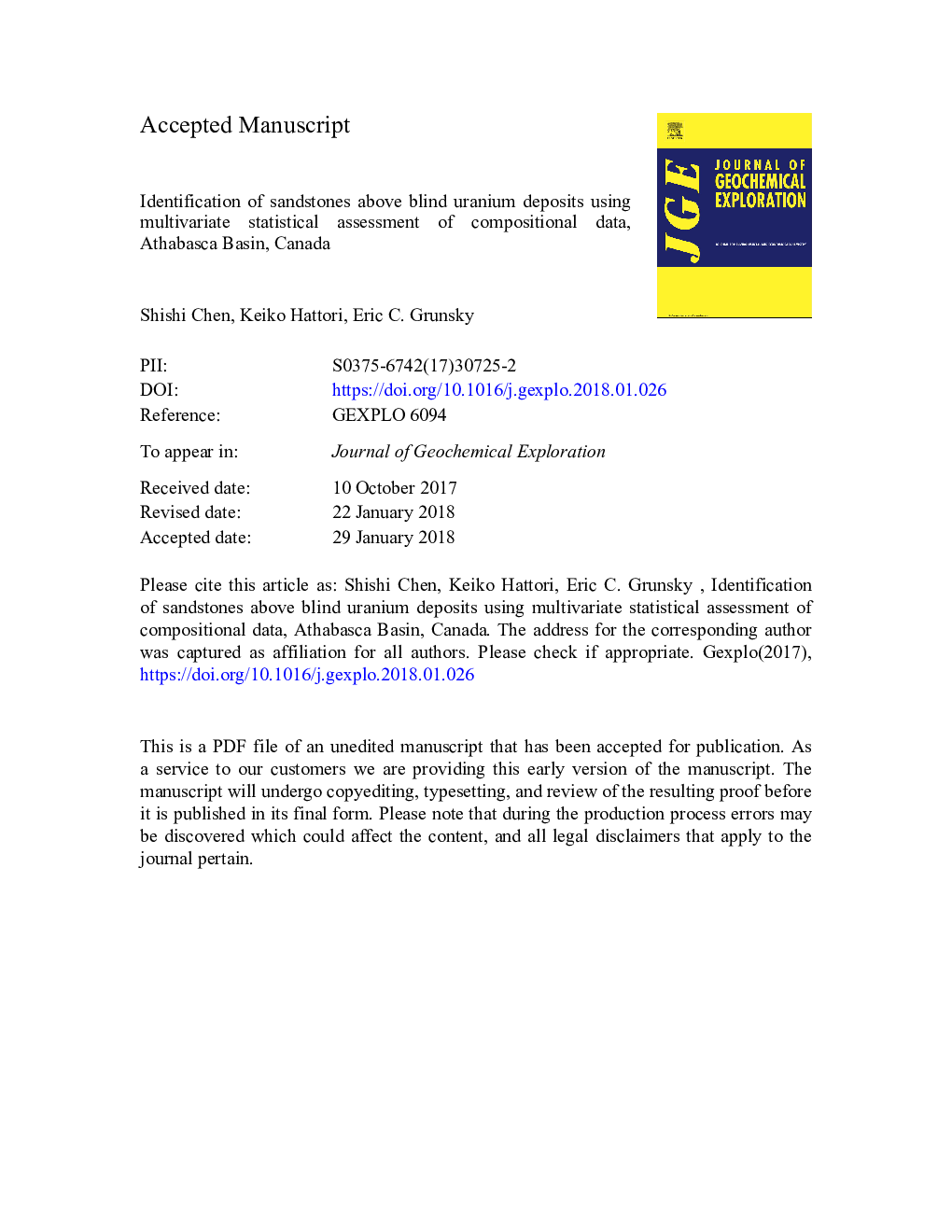| کد مقاله | کد نشریه | سال انتشار | مقاله انگلیسی | نسخه تمام متن |
|---|---|---|---|---|
| 8866005 | 1620869 | 2018 | 50 صفحه PDF | دانلود رایگان |
عنوان انگلیسی مقاله ISI
Identification of sandstones above blind uranium deposits using multivariate statistical assessment of compositional data, Athabasca Basin, Canada
دانلود مقاله + سفارش ترجمه
دانلود مقاله ISI انگلیسی
رایگان برای ایرانیان
کلمات کلیدی
موضوعات مرتبط
مهندسی و علوم پایه
علوم زمین و سیارات
زمین شناسی اقتصادی
پیش نمایش صفحه اول مقاله

چکیده انگلیسی
The Athabasca Basin in northern Saskatchewan, Canada, hosts the world's largest high-grade U resources near the unconformity between sandstones and underlying crystalline basement rocks. Finding U deposits is difficult in the interior of the Athabasca Basin where the sandstone cover can reach 1400â¯m. This study uses the lithogeochemistry of sandstones obtained from drill cores to identify elements associated with U using principal component analysis (PCA) from three areas; samples directly above the Phoenix U deposit, those in Denison Mine's Wheeler River property and background areas in the basin. The sandstone data from the Wheeler River property shows that U is positively associated with Y-Cu-Zn-Na-W-Co-Ni-B-Mg-HREEs-Cr-Sc-Mo-V-LREEs due to uraniferous hydrothermal alteration. In contrast, the principal components derived from the lithogeochemistry of sandstones far from known mineralization in the basin shows that U is positively associated with Th-Ti-Zr-Hf, suggesting that U is hosted in refractory detrital minerals. Linear discriminant analysis (LDA) and random forest (RF) analysis based on principal components of elements associated with U show three classes of sandstones with clear discrimination between samples; those above the Phoenix ore (Class Phoenix), in the Wheeler River (Class Wheeler River), and regional background (Class Regional Background). The class Phoenix contains most of the sandstone samples overlying the Phoenix deposit and a few samples in the Wheeler River property. This study shows that PCA, LDA and RF are able to detect geochemical footprints of uraniferous hydrothermal alteration >500â¯m from the ore and differentiate sandstones spatially associated with the mineralization from those in barren areas. Based on the performance of the two discrimination methods, we suggest that RF is a preferred method as it better differentiates altered sandstones from regional background samples. The classification analysis used in this study may be useful in U exploration in Athabasca Basin and other sedimentary basins.
ناشر
Database: Elsevier - ScienceDirect (ساینس دایرکت)
Journal: Journal of Geochemical Exploration - Volume 188, May 2018, Pages 229-239
Journal: Journal of Geochemical Exploration - Volume 188, May 2018, Pages 229-239
نویسندگان
Shishi Chen, Keiko Hattori, Eric C. Grunsky,